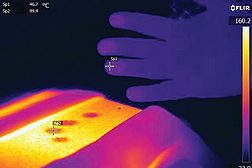Industrial Coatings
New Coating Technology Helps Build Solar Aircraft
Read More
2K Waterborne Epoxy-Fortified Technology
For Increased Cure Speed of Institutional Coatings
Read More
Keep the info flowing with our eNewsletters!
Get the latest industry updates tailored your way.
JOIN TODAY!Copyright ©2025. All Rights Reserved BNP Media.
Design, CMS, Hosting & Web Development :: ePublishing










